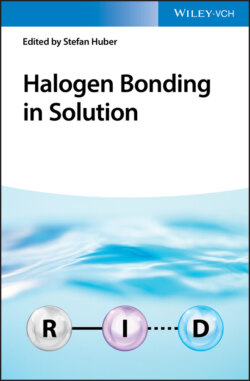Читать книгу Halogen Bonding in Solution - Группа авторов - Страница 31
1.4.6 Dispersion and Polarization Component
ОглавлениеLondon dispersion and polarization effects on the halogen bond can be important given the polarizability of larger halogens (e.g. I and Br) and the fact that interacting partners are frequently closer than the sum of the vdW radii. Dispersion interactions resulting from a temporary dipole and another dipole between the halogen and Lewis base provide a small but attractive force that contributes greatly in systems without large electropositive σ‐holes [153].
Lump–hole theory [154] is an alternative electrostatic model that describes a depletion of negative charge at the end of the halogen and accounts for dispersion and polarization. For example, Hobza and coworkers showed that a CH3Cl molecule can form a halogen bond with O<span class="dbond"></span>CH2 despite that the Cl never forms an electropositive σ‐hole [155]. Obviously, σ‐hole theory does not account for weak halogen bond formation in CH3Cl as dispersion dominates the interaction in this case.
Figure 1.16 DFT–SAPT decomposition analysis of H3CBr⋯NH3 (solid lines) and F3CBr⋯NH3 complexes (dashed lines) (kcal/mol). Potential energy minima are shown as vertical dashed lines (H3CBr⋯NH3 is green, and F3CBr⋯NH3 is light blue). The components are reported as follows: electrostatics (E(elec)), induction or polarization (E(ind)), dispersion (E(disp)), and exchange (E(exch)), and total binding energies (E(int)).
Source: From Riley and Hobza [153]. © 2013 Royal Society of Chemistry.
